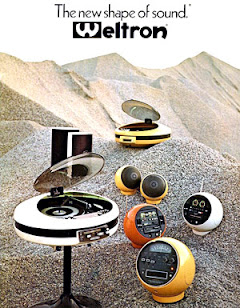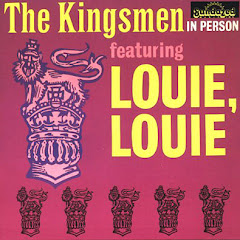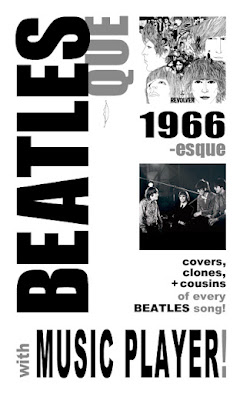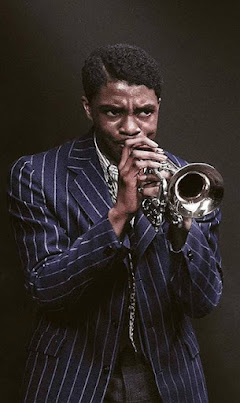Getting so much resistance from behind"
ROCK Sex brings you the story of how a local youth revolt became a momentum that spans decades, continents, and generations.
By the mid-'60s, the Sunset Strip district in Los Angeles had lost its allure for the movie star crowd. A wave of Rock'n'Roll clubs brought in the disaffected young people and a new outlook in music, style, and philosophy. It was in clubs like the Whisky A Go Go, The Trip, Bido Lito's, and The Troubadour that the LA counterculture flourished, with bands like The Doors, Love, The Byrds, Spirit, Thee Midniters, The Turtles, and The Mothers Of Invention.
The sight of young people dressed like Native Americans in large crowds outside their doors made local merchants freak out. The time-honed reflex of Capitalists to anything with imagination was to call in the law. Police began harassing the youth and the youth tried to complain. Headlines blazed with "the riots on the Sunset Strip" that the kids were allegedly inciting. (Notice the never-ending narrative that recasts peaceful protesters as violent rioters, and a police state as moral balance.)
Hollywood was the source of most film and TV at the time, but there was little outlet for the youth to show their side of it. Here's Ayn Rand's posterboy, Jack Webb, chomping out another one of his bitter fear rants at a caricature of Timothy Leary.
"DRAGNET" TV show (1968)
Hollywood at the time was in its deepest decline. It was pumping out expensive musicals that everyone was skipping to watch TV. While The '60s was shaping up as one of the most dynamic sociopolitical decades in the country's history, Americans were tuning out to watch fantasy escapism like talking horses, suburban witches, and spies in Hefner fantasias. The young people dropped out of both by seeing smart foreign films in arthouse and college theaters.
This left only the exploitation movie market, which tended to turn every trend into a bombastic cartoon. Very quickly the whole thing was flipped into RIOT ON THE SUNSET STRIP (1967). These types of films were made on the cheap and usually exploited the allure of the forbidden while ultimately condemning it. But whether it was a dawning sense of empathy with the young rebels or just seeing a new audience to market, the film actually gives the kids' view a somewhat fairer shot at representation than old-guard newspapers or TV News, considering.
(Ironically, it was through the exploitation market that 'hippie radical' filmmakers revolutionized and saved Hollywood in the next few years.)
RIOT ON THE SUNSET STRIP Trailer (1967)
(Notice how the never-ending narrative casts the generation as aimless cliches "protesting, with no direction, no goal". This lazy dismissal of legitimate and articulated grievances continues in Corporate-owned News coverage today.)
The film is a favorite of Garage Rock fanatics for its great appearance by The Chocolate Watchband, as well as this performance of the title song by The Standells.
THE STANDELLS -"Riot On The Sunset Strip" (1967)
The so-called "riots" of young people protesting about being bullied by the police spawned songs by their bands. Here's Frank Zappa and his accomplices radicalizing "Louie Louie".
THE MOTHERS OF INVENTION -"Plastic People" (1967)
Tired of being called the Prefab Four, The Monkees started rejecting their TV constraints by writing and playing their own songs, going more political and experimental, and ultimately committing glorious career suicide with the amazing film, HEAD (1968).
Mickey Dolenz was the third person in the world to own a Moog synththesizer, which he used on their song inspired by the Sunset Strip rebellion.
THE MONKEES -"Daily Nightly" (1967)
But by far the most influential song triggered by the "riots" was this one by Buffalo Springfield and writer/performer Stephen Stills.
With its signature guitar intro, clear-eyed tone, and anthemic call-and-response, the song struck an immediate chord that never stopped resonating. Many folks think the song was about Vietnam or Kent State, but it preceded them. Though it was meant about the Sunset Strip, its general message became an anthem for rebels and protest movements worldwide and across time.
BUFFALO SPRINGFIELD -"For What It's Worth" (1967)
Here's one of the first examples, where The Staple Singers make it a Gospel anthem that speaks as much to the Civil Rights Movement specifically as the counterculture in general.
THE STAPLE SINGERS -"For What It's Worth" (1967)
Here's Led Zeppeln doing it live. It almost seems like Jimmy Page wanders into it for mood, but the crowd is so responsive that (at 0:45) you can hear an audience member goad Robert Plant with "Sing it!" Clearly the song is a bonding anthem for the entire generation, a rebel yell and a communion psalm.
LED ZEPPELIN -"For What It's Worth" (live, 1970)
But a good song surpasses any borders. As many of the late-'60s/early-'70s philosophies and styles were resurrected by the counterculture's children in the late-'80s/early-'90s, the song again came around. This version retains all of Stephen Still's roots guitar licks.
OUI 3 -"For What It's Worth" (1993)
And Public Enemy retained Stephen Stills himself, who came in especially to re-sing and play his timeless parts for their remake.
PUBLIC ENEMY -"He Got Game" (1998)
Quality is timeless, but oppression is untiring. You will always have to stand together for what's right.
HALEY REINHART -"For What It's Worth" (2017)
So, vital people of now, I say this:
if you feel you live in a era when greedy Conservatives misuse the law to bully you down, where free speech is Zoned, where peaceful protests are met with batons and tear gas, where the media is run by tonedeaf pawns, where dynamic politics is ignored by people tuning out to escapist fantasy TV and overly expensive movies...
Riot in your mind and write a good song.
Telling me I got to beware
Young people speaking their minds
Getting so much resistance from behind
It's time we stop
Hey, what's that sound?
Everybody look what's going down"
© Tym Stevens
See Also:
• The Struggle For the Moral Soul: MARTIN LUTHER KING and Civil Rights
• HERE IN PURPLE VELVET NOW: The Psychedelic Revolution, with 2 Music Players!
• MY SOUL HAS BEEN PSYCHEDELICIZED: The Afro-delic Dimension of Psychedelia, with 2 Music Players!
REVOLUTION! - A 'Fight The Power' Music Player
• "PHYSICAL GRAFFITI" - Led Zeppelin > Branford Marsalis > Rolling Stones
• "Sing A Simple Song" - Sly Stone > Jimi Hendrix > James Gang > P-Funk > Chili Peppers > Public Enemy
• The Real History of Rock and Soul!: The Music Player Checklist











































































































































